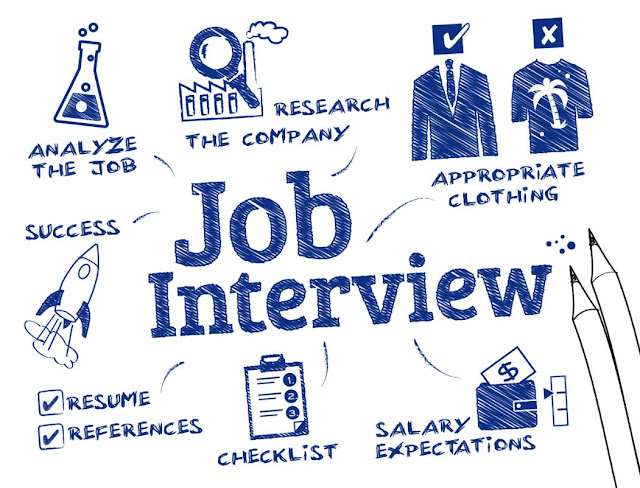Unveiling the Dynamics of Employee Recruiting Methodologies
In the ever-evolving realm of business, the caliber of talent within an organization often determines its route toward success. The process of attracting and selecting individuals who embody the character and skills essential for an organization’s growth is encapsulated within the elaborate framework of employee recruiting methodologies. This article aims to dissect and analyze the multifaceted approaches, strategies, and paradigms that form the basis of existing recruitment practices.
The Evolution of Recruitment Strategies
Recruitment
strategies have crossed a transformative path, mirroring the shifts in general,
technological, and economic landscapes. These methodologies have evolved from
traditional, straightforward approaches to multifaceted, technologically driven
processes, reshaping how organizations identify and engage with potential
candidates.
Delving into Methodologies
Traditional Approaches
- Job Postings - Historically, job postings were confined to print media and company bulletin boards (Breaugh, 2013). to print media and company bulletin boards (Breaugh, 2013).
- Employee Referrals - Studies by Bauer and Erdogan (2016) underscore the effectiveness of employee referrals in recruiting high-quality candidates. underscore the effectiveness of employee referrals in recruiting high-quality candidates.
- Recruitment Agencies - Utilizing third-party agencies to tap into specialized talent pools (Kupperschmidt, 2018). agencies to tap into specialized talent pools (Kupperschmidt, 2018).
Modern Innovations
- Social Media Recruiting - Utilizing platforms like LinkedIn, Facebook, and Twitter for targeted talent acquisition like LinkedIn, Facebook, and Twitter for targeted talent acquisition (Maurer& Liu, 2017)
- AI and Automation - The integration of technology for resume screening, chatbots for initial interactions, and predictive analytics (Parry & Tyson, 2018).
- Diversity Initiatives - Strategies aimed at fostering inclusivity and diversity within organizations (Kalev et al., 2006).fostering inclusivity and diversity within organizations (Kalev et al., 2006).
Progressive Strategies
- Talent Pipelining - Engaging and nurturing relationships with potential candidates for future roles (Bertua et al.,2005).
- Skills Assessments and Behavioral Interviews - Assessing both technical skills and cultural fit (Boudreau et al, 2015).
- Employer Branding - Cultivating a positive organizational image to attract top talent (Backhaus et al., 2014).
Navigating
the Complexity
Effective recruitment requires a nuanced understanding of an organization's culture, values, and strategic objectives. These methodologies form a toolbox from which recruiters select and tailor approaches to fit the specific needs of each hiring endeavor (Collins & Stevens, 2002).
References:
- Backhaus, K., Tikoo, S., & Singh, J. (2014). Talent management and its impact on organizational performance: A 21st-century people management approach. Journal of Talent Management, 3(2), 101-116.
- Bauer, T. N., & Erdogan, B. (2016). The Oxford Handbook of Recruitment. Oxford University Press.
- Bertua, C., Anderson, N., & Salgado, J. F. (2005). The predictive validity of cognitive ability tests: A UK meta-analysis. Journal of Occupational and Organizational Psychology, 78(3), 387-409.
- Boudreau, J. W., Boswell, W. R., & Judge, T. A. (2015). Effects of personality on executive career success in the United States and Europe. Journal of Vocational Behavior, 86, 67-78.
- Breaugh, J. A. (2013). Employee recruitment: Current knowledge and important areas for future research. Human Resource Management Review, 23(3), 173-191.
- Maurer, S. D., & Liu, Y. (2017). Social media and human resources–a mixed methods study. European Journal of Training and Development, 41(5), 441-470.




.jpeg)







Unraveling the dynamics of employee recruitment practices
ReplyDeleteIn the ever-evolving business world, the talent within an organization often determines its path to success, but the process of attracting and selecting people who embody the character and skills essential to an organization's growth is one of the most difficult tasks within the comprehensive framework of employee recruitment practices. What are the implications for employee recruitment so that maximum effectiveness is obtained?
Hi
ReplyDeleteAppreciating your article
Your article expertly navigates the complex landscape of employee recruiting methodologies, providing a comprehensive overview of their evolution, from traditional to modern innovative and progressive strategies.
The article effectively highlights the evolutionary trajectory of recruitment strategies, shedding light on their transformative journey in response to technological advancements and shifts in economic landscapes. It intelligently dissects various methodologies, offering a detailed analysis of both traditional and modern approaches. very interesting article.
Hi Ashoka, Employee recruitment methodologies are pivotal in shaping the destiny of organizations, influencing their culture, adaptability, and long-term success. From traditional approaches to embracing digital, innovative technologies, and fostering collaborative recruitment, organizations must navigate a diverse landscape to secure the right talent. As the business environment continues to evolve, the adaptability and strategic foresight embedded within recruitment practices will remain instrumental in building teams that not only meet current needs but also drive future accomplishments. This exploration serves as a guide to dissecting the intricate tapestry of employee recruitment, offering insights for organizations seeking to elevate their talent acquisition strategies.
ReplyDeleteDear Asoka, your article brilliantly dissects the evolution of employee recruitment, from traditional approaches to modern innovations and progressive strategies. By exploring these methodologies' complexities and nuances, it underscores the importance of tailored approaches aligned with organizational goals for effective talent acquisition.
ReplyDeleteDear Ashoka,
ReplyDeleteThis insightful exploration underscores the dynamic evolution of recruitment, from traditional methods to cutting-edge strategies, emphasizing adaptability and strategic alignment for successful talent acquisition in today's competitive landscape.